Science 2.3 "What Are Gymnosperms?"
4.8(5)
4.8(5)
Card Sorting
1/18
Earn XP
Description and Tags
Study Analytics
Name | Mastery | Learn | Test | Matching | Spaced |
|---|
No study sessions yet.
19 Terms
1
New cards
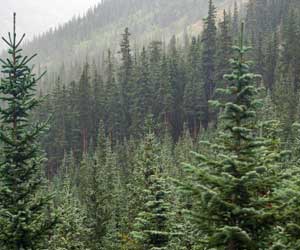
evergreen
a plant that retains its leaves all year long
2
New cards
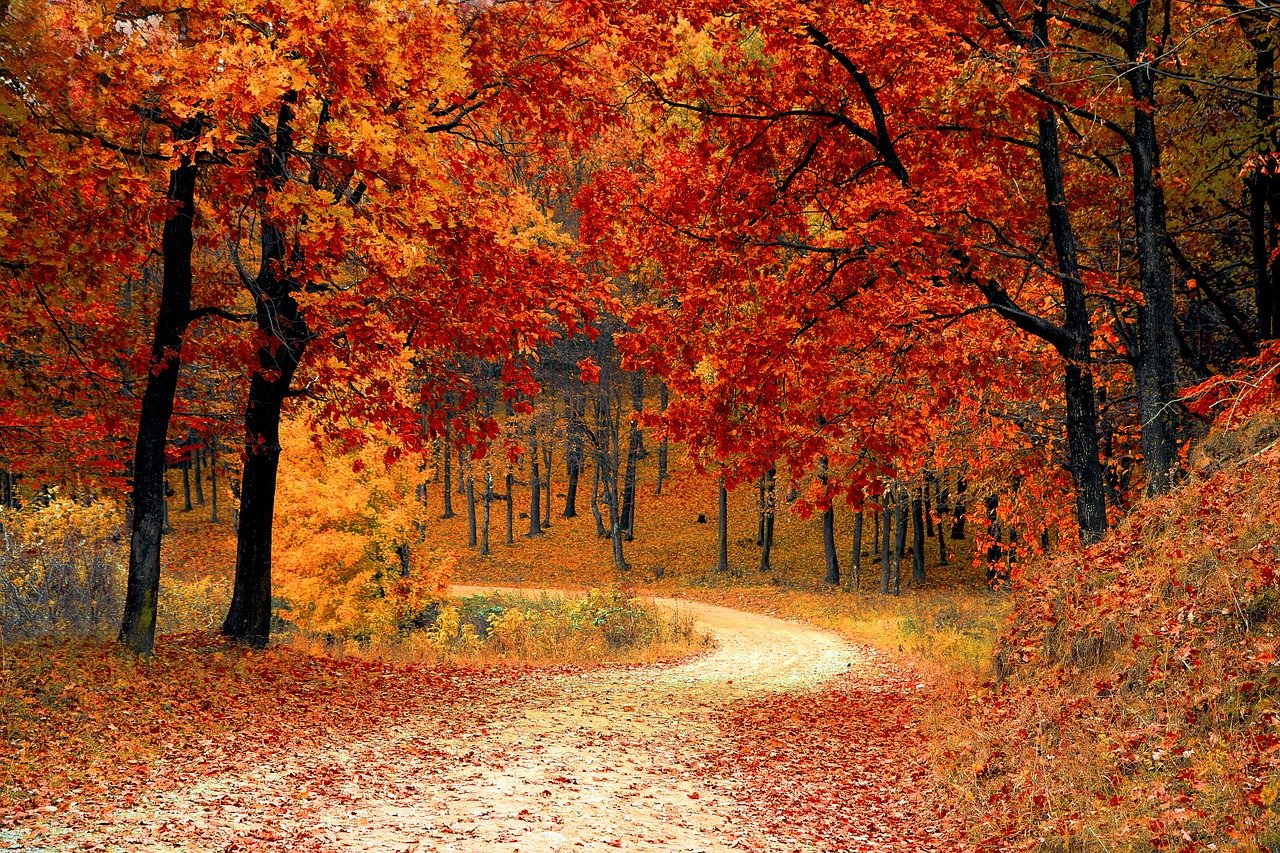
deciduous
a plant that drops its leaves in the fall
3
New cards
conifer
a cone-bearing plant w/ needlelike or scalelike leaves
4
New cards
gymnosperms
- a group of vascular plants w/ exposed seeds that is divided into four divisions
5
New cards
gymnosperm divisions
Cycadophyta, Gnetophyta, Coniferophyta, Ginkgophyta
6
New cards
Cycadophyta
- a gymnosperm division of mostly everygreen plants
- ex: cycad
- ex: cycad
7
New cards
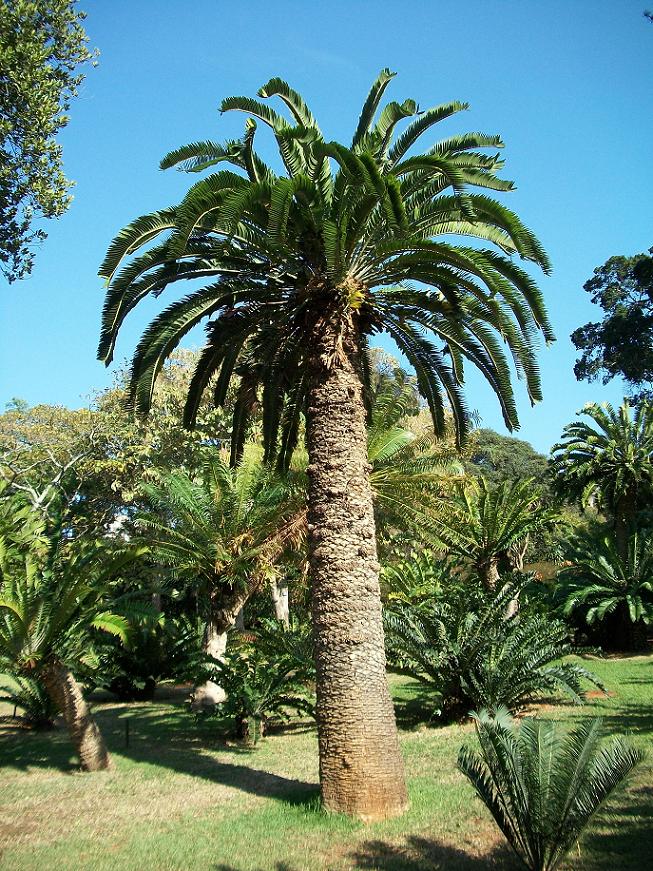
cycad
- in the cycadophyta division
- an evergreen plant w/ stems that resemble thick trunks
- height is 2 m - 20 m
- some leaves are similar to palm leaves, but aren't actually palm trees
- it bears cones
- grows in tropics + subtropics
- leaves' base is arranged in a tightly packed spiral
- an evergreen plant w/ stems that resemble thick trunks
- height is 2 m - 20 m
- some leaves are similar to palm leaves, but aren't actually palm trees
- it bears cones
- grows in tropics + subtropics
- leaves' base is arranged in a tightly packed spiral
8
New cards
palm tree and cycad
have a difference of the palm tree being a flowering plant while the cycad is a cone bearer
9
New cards
ginkgophyta
- a gymnosperm division w/only one living species: Ginkgo biloba
- males bear cones w/ pollen
- females produce soft, fleshy cones that look like apricots + have a slightly rotten odor that helps the tree complete its life cycle
- its nickname "maidenhair" comes from its fan-shaped leaves
- deciduous + turn golden yellow in fall
- males bear cones w/ pollen
- females produce soft, fleshy cones that look like apricots + have a slightly rotten odor that helps the tree complete its life cycle
- its nickname "maidenhair" comes from its fan-shaped leaves
- deciduous + turn golden yellow in fall
10
New cards
gnetophyta
- a gymnosperm division that has 3 living genera:
Ephedra, Gnetum, Welwitschia
- are mostly evergreens
Ephedra, Gnetum, Welwitschia
- are mostly evergreens
11
New cards
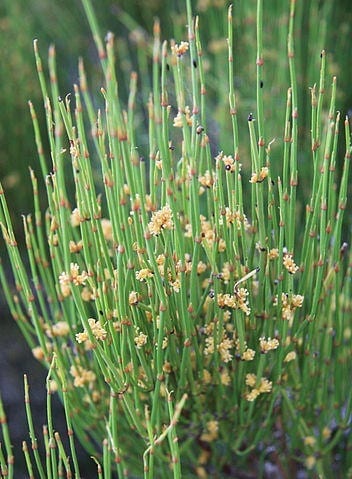
ephedra
a genera of Gnetophyta w/ shrubs + vines that grow in dry areas of the world
- ex: ma huang - a Chinese plant used for the drug, ephedrine, for decongestants
- ex: ma huang - a Chinese plant used for the drug, ephedrine, for decongestants
12
New cards
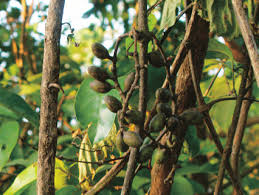
gnetum
a genera of Gnetophyta w/ woody vines, shrubs, + small trees that grow in tropical + desert climates
13
New cards
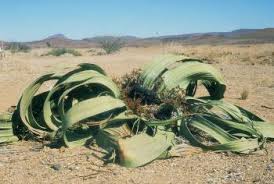
welwitschia
a genera of Gnetophyta w/ only one plant named "Welwitschia" + are only found in the desert of Southwestern Africa
- it has a large storage root + 2 long permanent leaves which are torn by the wind to make it look like many leaves
- it has a large storage root + 2 long permanent leaves which are torn by the wind to make it look like many leaves
14
New cards
coniferophyta
- a division of gymnosperms of mainly evergreen trees or shrubs
- they dominate enormous forests in Europe, Asia, + North America
- height: 8 m (ex: pygmy pine in New Zealand) to 110 m (redwoods in California)
- male + female cones develop on different branches of the same tree or shrub (unlike other 3 divisions)
- they dominate enormous forests in Europe, Asia, + North America
- height: 8 m (ex: pygmy pine in New Zealand) to 110 m (redwoods in California)
- male + female cones develop on different branches of the same tree or shrub (unlike other 3 divisions)
15
New cards
scales
indiviual plates that cones are made of and contains the reproductive structures
16
New cards
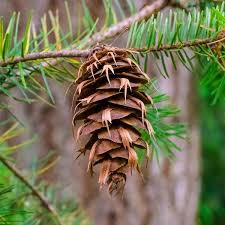
female cones
woody, large, easy to see cones, + produce ovules (eggs)
17
New cards
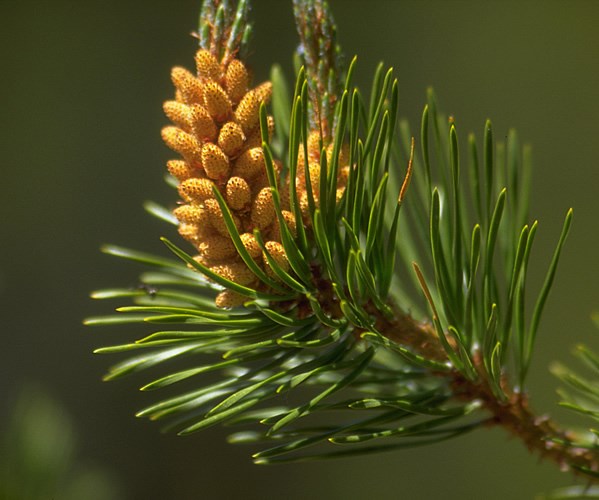
male cones
smaller cones + produce pollen
18
New cards
gymnosperm life cycle
- reproduce w/ seeds
- gametophyte stage of reproduction occurs within cones (differs from moss because it is inside + not outside)
- produces both male + female cones
- doesn't need water for fertilization due to pollen transported by wind
- while seed forms, the embryo develops in the protected + moist enviornment of a female cone
- a supply of food + water inside the embyo will allow it to grow into a new gymnosperm
- gametophyte stage of reproduction occurs within cones (differs from moss because it is inside + not outside)
- produces both male + female cones
- doesn't need water for fertilization due to pollen transported by wind
- while seed forms, the embryo develops in the protected + moist enviornment of a female cone
- a supply of food + water inside the embyo will allow it to grow into a new gymnosperm
19
New cards
alternation of generations in conifers
1. pollen forms on the male cone scales (gametophyte stage)
2. ovules (eggs) form at the base of scales of female cones + mature to form eggs. (gametophyte stage)
3. In spring, released pollen from male cones are carried by wind to female cones + get pollinated. It will sprout a pollen tube + reach the female gametophyte. The gametophyte will release two sperm cells. One will unite w/ the egg + form a zygote
4. A sporophyte zygote develops into an embryo + then into a seed in the female cone that is protected w/ a thick seed coat. It will release the seeds in right conditions
5. The seeds fall to the ground + sprout into a new gymnosperm sporophyte
2. ovules (eggs) form at the base of scales of female cones + mature to form eggs. (gametophyte stage)
3. In spring, released pollen from male cones are carried by wind to female cones + get pollinated. It will sprout a pollen tube + reach the female gametophyte. The gametophyte will release two sperm cells. One will unite w/ the egg + form a zygote
4. A sporophyte zygote develops into an embryo + then into a seed in the female cone that is protected w/ a thick seed coat. It will release the seeds in right conditions
5. The seeds fall to the ground + sprout into a new gymnosperm sporophyte